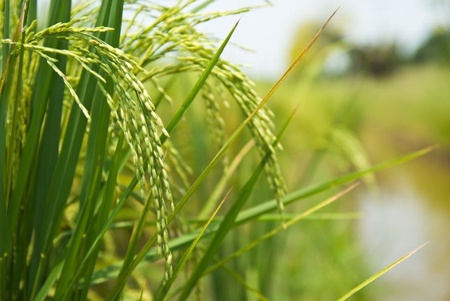Concerns about arsenic in food have grown in recent years with high concentrations found in rice, fruit juices and even baby food.
A naturally occurring element found in soil and water, arsenic has also been used as a pesticide, and is taken up by plants and can then enter the food chain.
The issue has led to scientific work to investigate how plants deal with arsenic and research has identified that some plants are able to pump out the poison, but not how they do this.
In a paper published today (December 8) in the journal PLOS Biology an international team led by the University of Aberdeen has identified a gene critical to this process – a finding which could be used to breed new varieties of crops that naturally accumulate less arsenic.
The research team, which includes scientists from the Shanghai Institutes for Biological Sciences of the Chinese Academy of Sciences, Nanjing Agricultural University and Rothamsted Research, found that the gene HAC1 is used by the flowering plant Arabidopsis thaliana (Mouse-ear cress) to control arsenic accumulation and that when it is removed, the concentration of arsenic in the plants increased 300-fold.
Identification of this key gene in the easy to work with Mouse-ear cress now makes it simpler to identify the equivalent gene in crops that large populations depend on for food, such as rice and wheat.
Professor David E Salt from the University of Aberdeen led the study. He said: “Arsenic is a poison well known to be dangerous to animals, including humans and plants as it damages fundamental chemical processes in most living systems.
“It is mainly found in two forms in soil – as arsenite As (III) and its oxidised form arsenate As (V). Arsenate is dangerous for plants as chemically it is very similar to phosphate – needed to manage energy within cells – so they are unable to distinguish between a dangerous toxin and an element essential for life.
“In order to survive, the plants need to find a way to deal with the poison entering their roots and so they convert it from arsenate, the form in which it is absorbed, to arsenite which can then be effluxed or pumped out from the roots.
“Previous research has identified that this process was happening but not how it was happening and that is where we have taken an important step forward.”
The researchers were able to pinpoint the gene (HAC1) encoding an arsenate reductase that performs this conversion of As (V) to As (III) . They then conducted a series of experiments which proved that when the HAC1 gene was removed, the plants could no longer pump arsenic from their roots and the concentration of arsenic in the plants increased dramatically.
Professor Salt added: “This finding means that we now understand more fully the mechanism for arsenic tolerance in plants.
“Because we now know what gene we are looking for, it will speed up the process for detecting it in other plants.
“Particular crop varieties are often grown because they have a good yield or suit particular conditions but not because they have a high capacity to pump arsenic from their roots, meaning arsenic can accumulate in their edible parts.
“Now we know the identity of the gene we can use this information to breed new varieties of crops with a strong version of the arsenate reductase but which also keep their favourable agronomic properties. Putting this into practice would mean you have a good crop without arsenic.”
The full paper can be viewed online at http://www.plosbiology.org/article/info%3Adoi%2F10.1371%2Fjournal.pbio.1002009


